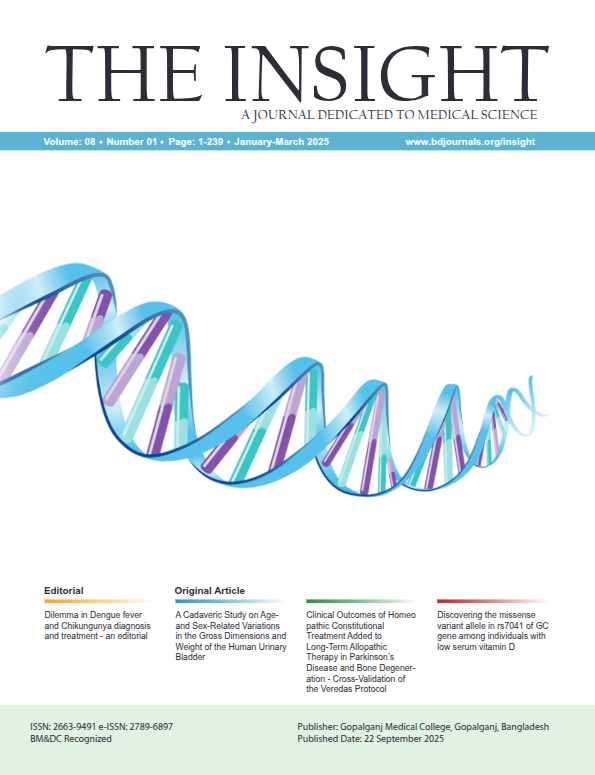Abstract
Introduction: Laryngeal carcinoma is one of the most common head and neck cancers, making up about 30-40% of all head and neck cancers. Understanding the relationship between clinical and pathological features is essential for managing patients and determining their prognosis. This study aimed to look into the demographic factors, clinical signs, and tissue patterns of laryngeal carcinoma patients in Bangladesh. Methods & Materials: An observational cross-sectional study took place over six months, from March to September 2015, at Dhaka Medical College Hospital. The study included one hundred patients confirmed to have laryngeal carcinoma, selected using convenient and purposive non-randomized sampling. Data collection involved structured interviews, physical exams, and tissue analysis. Statistical analysis used SPSS v26 for descriptive statistics, correlation analysis, and chi-square tests. Results: Most patients were male (92%) and aged 51-60 years (52%). A large number came from lower socioeconomic backgrounds (74%) and rural areas (73%). Supraglottic tumors were more frequent (66%) compared to glottic tumors (34%). The most common symptom was a change in voice (70%), followed by difficulty swallowing (50%) and breathing problems (44%). Most patients had moderately differentiated tumors (60%) and were at stage III (44%). A strong positive correlation appeared between histological grade and TNM stage (r=0.62, p<0.05). Conclusion: The study highlights a significant male predominance and rural prevalence of laryngeal carcinoma, which aligns with global trends. The strong link between histological differentiation and disease stage shows how important thorough pathological evaluation is for treatment planning and assessing prognosis.

This work is licensed under a Creative Commons Attribution 4.0 International License.
Copyright (c) 2025 The Insight





 PDF
PDF